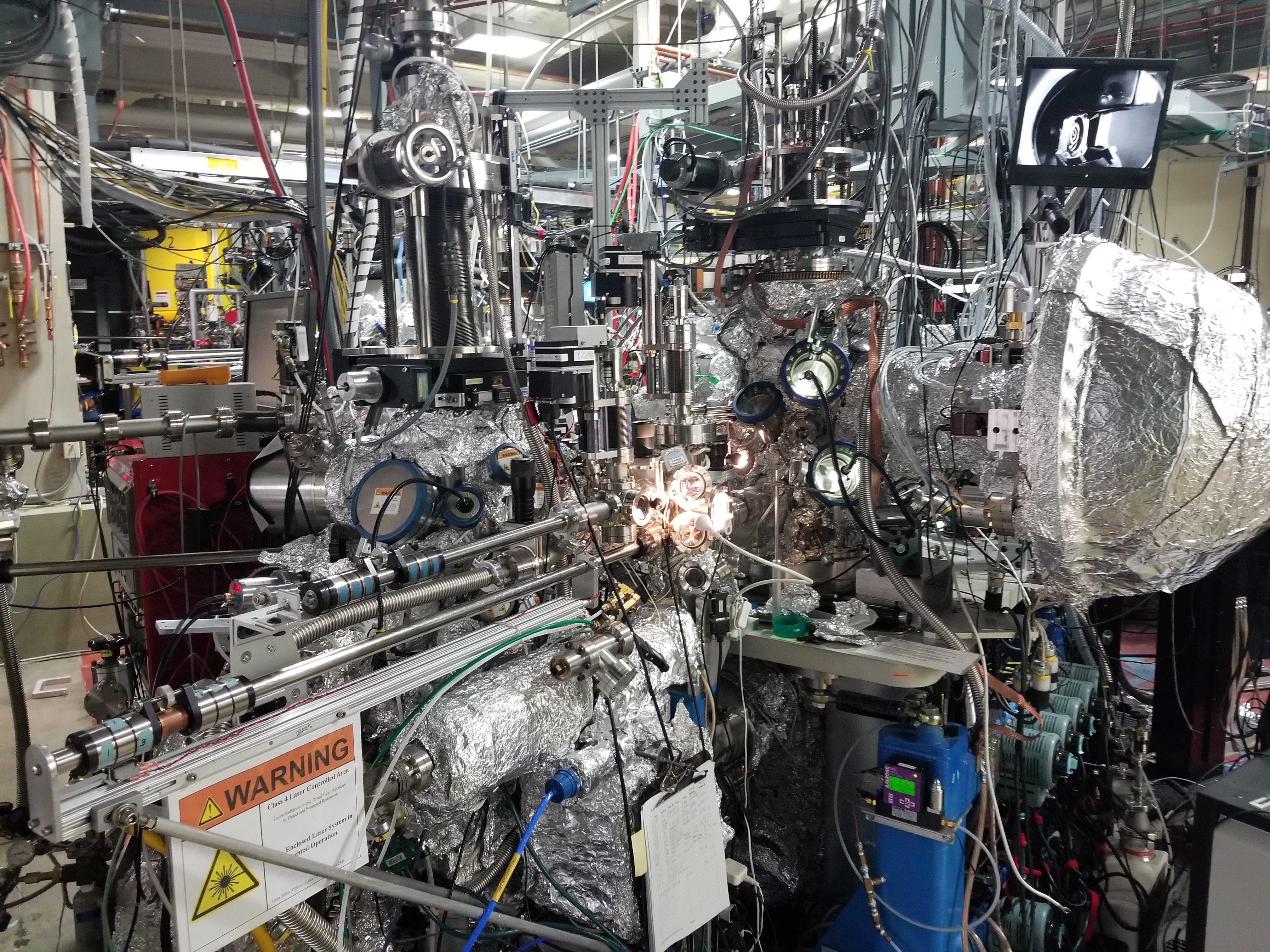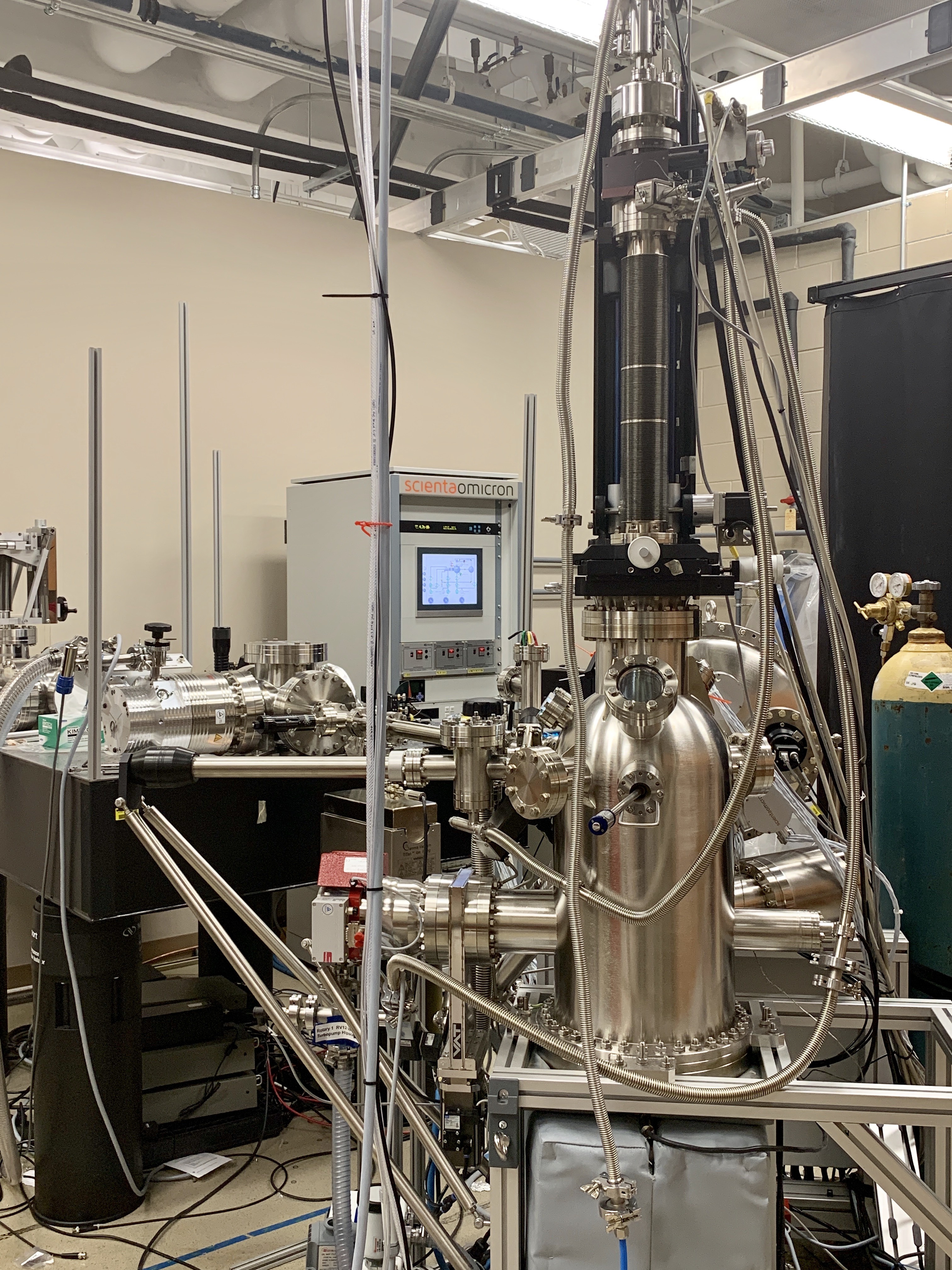Angle-resolved photoemission spectroscopy
Angle resolved photoemission spectroscopy (ARPES) is a spectroscopic technique based on Einstein’s photoelectric effect (photon in electron out process) which was initially discovered by Hertz in 1887. When a photon can overcome the binding energy of a certain compound and it strikes the surface of such a material, a measurable photoelectron is ejected. The kinetic energy, polar, and azimuthal angle of the ejected electrons in a fixed photon energy contains enough information regarding the binding energy and the momentum component parallel to the surface of the sample to precisely recreate the electronic structure of the material. Particularly, ARPES measures the occupied state of the single-particle spectral function providing detailed information about the band dispersions and many-electron interactions. Furthermore, ARPES images band dispersion, band gap and Fermi surface mapping. Spin- ARPES provides information about the spin polarization. ARPES has become a powerful tool for studying topological materials because of their surface sensitive nature. Topological insulators have robust surface states featured by the spin-momentum locked Dirac cone states which can be imaged using ARPES measurements.
Synchrotron, laser, and Helium based lamps are the different types of light sources used in ARPES systems. Our group frequently uses synchrotron light sources to perform our systematic spectroscopic measurements. We mostly use Advanced light source (ALS) at Berkeley, Stanford radiation lightsource (SSRL) at Stanford, and Swiss light source (SLS), Switzerland to perform our experiment. Our home-built system is equipped with a Helium lamp and a high-order harmonics based laser source.
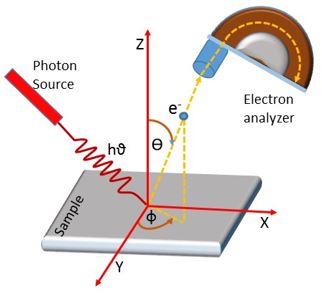

Pump-probe setup
Time- and angle-resolved photoemission spectroscopy (trARPES) is a powerful tool for studying quantum materials, since it can not only measure the nonequilibrium states, but also track ultrafast dynamics on femtosecond and attosecond timescale. In collaboration with Professor Chini, we demonstrate a novel high-order harmonic-based trARPES setup, whose layout is shown below. Second harmonic pulses are generated using a BBO crystal (thickness = 2 mm) with more than 50% conversion efficiency and are focused by an f = 175 mm lens into a krypton-filled gas cell (length = 0.4 mm) with a backing pressure of 20 torr to generate high harmonics. For trARPES measurements, the single harmonic isolation is necessary. In our case, this is achieved by blocking the lower harmonic orders using an Al foil filter (thickness = 500 nm) and suppressing the high-order harmonic cutoff by reducing the laser intensity. The tunable repetition rate of the laser allows us to reduce the laser pulse energy while increasing the repetition rate, maintaining a constant average power. In this way, the 9th harmonic can be well isolated with the repetition rate from 75-120 kHz with >10 x extinction of neighboring 7th and 11th harmonics. The harmonic probe is reflected by a SiC coated flat mirror and focused by an f = 650 mm toroidal mirror onto the target. The on-target photon flux of the 9th order is measured to be ~5×1010 photons per second. The residual 1030 nm laser after the BBO crystal is used as the pump pulse. Varying the delay between the pump and probe arms is achieved by adding a delay stage in the pump path.
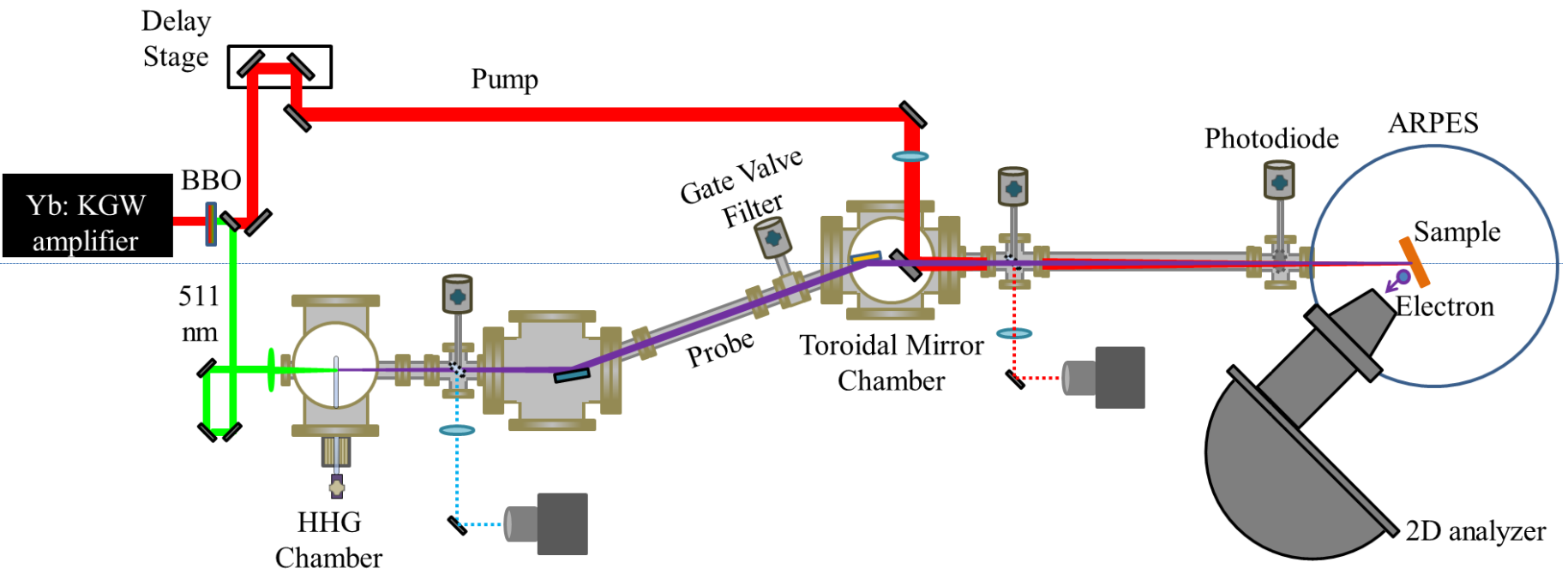
Angle- and time-resolved ARPES
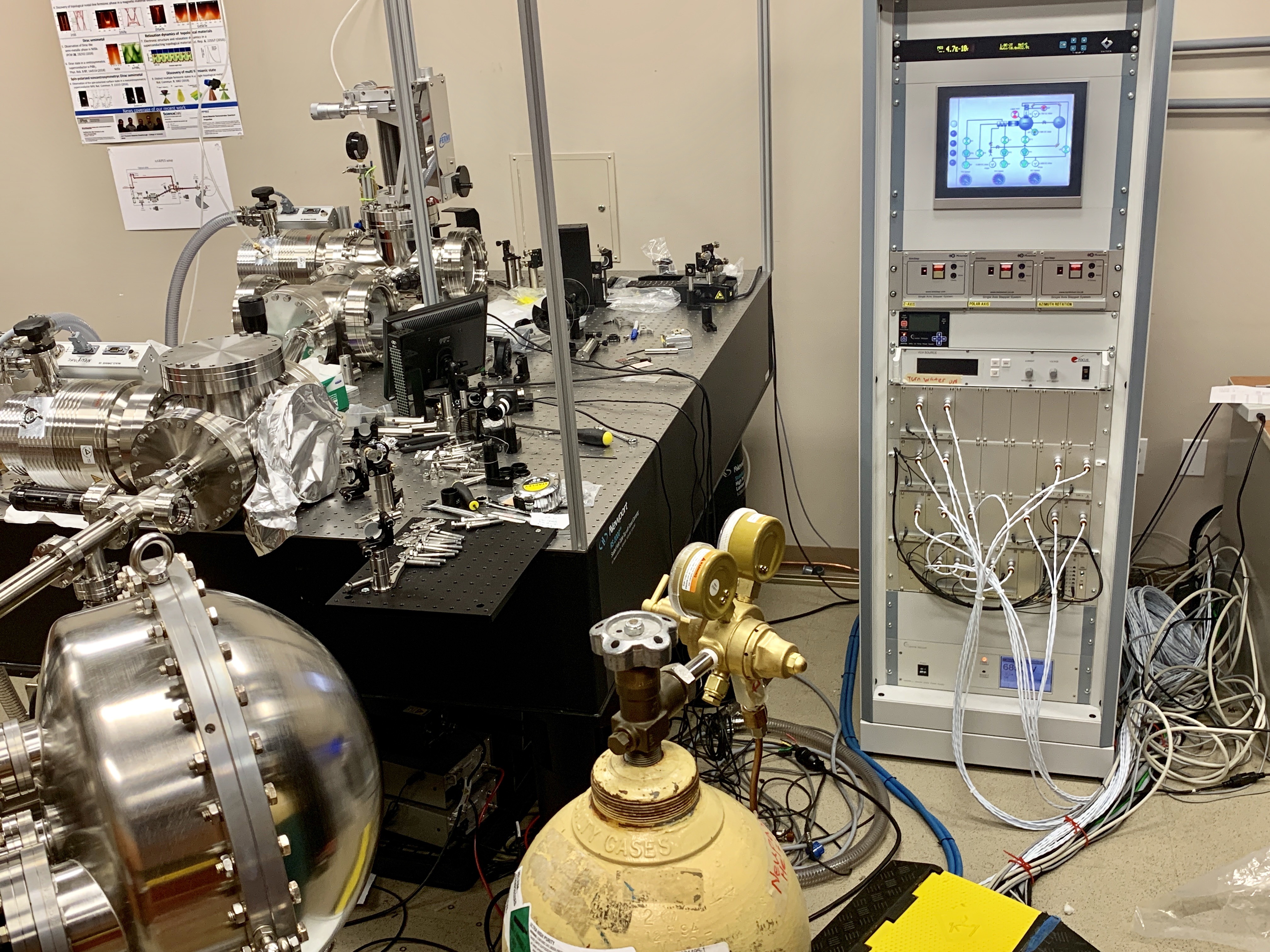
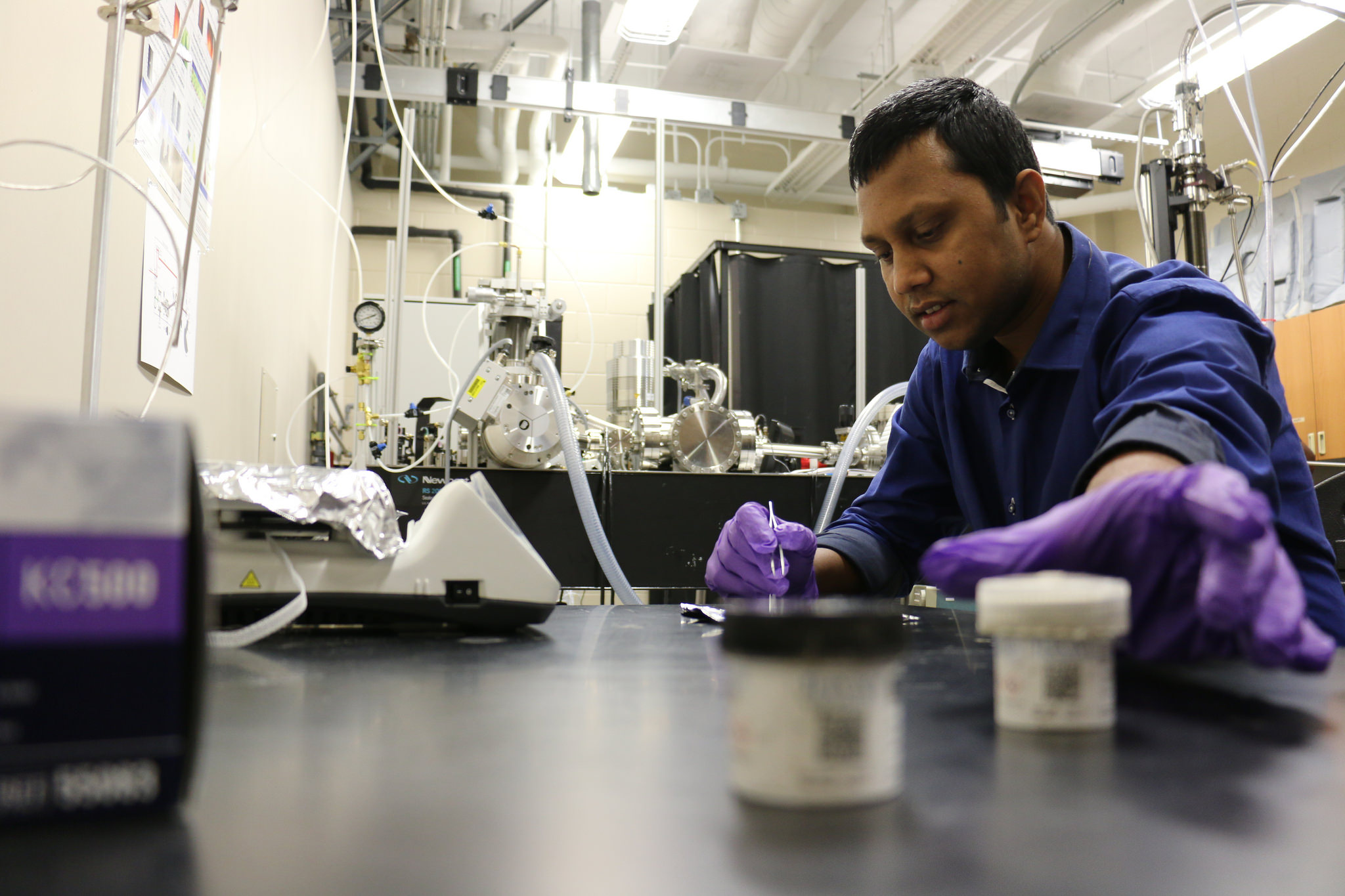
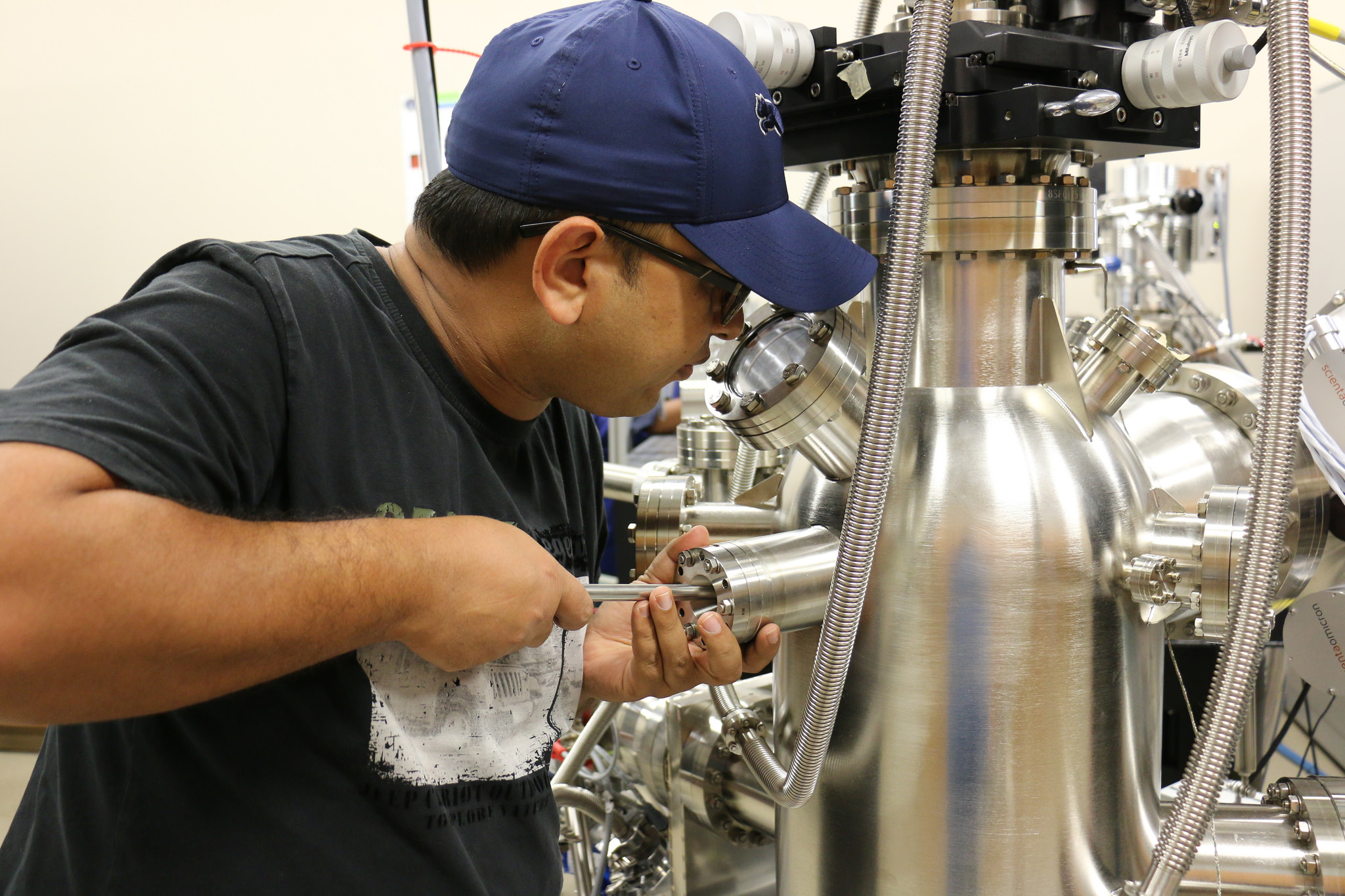

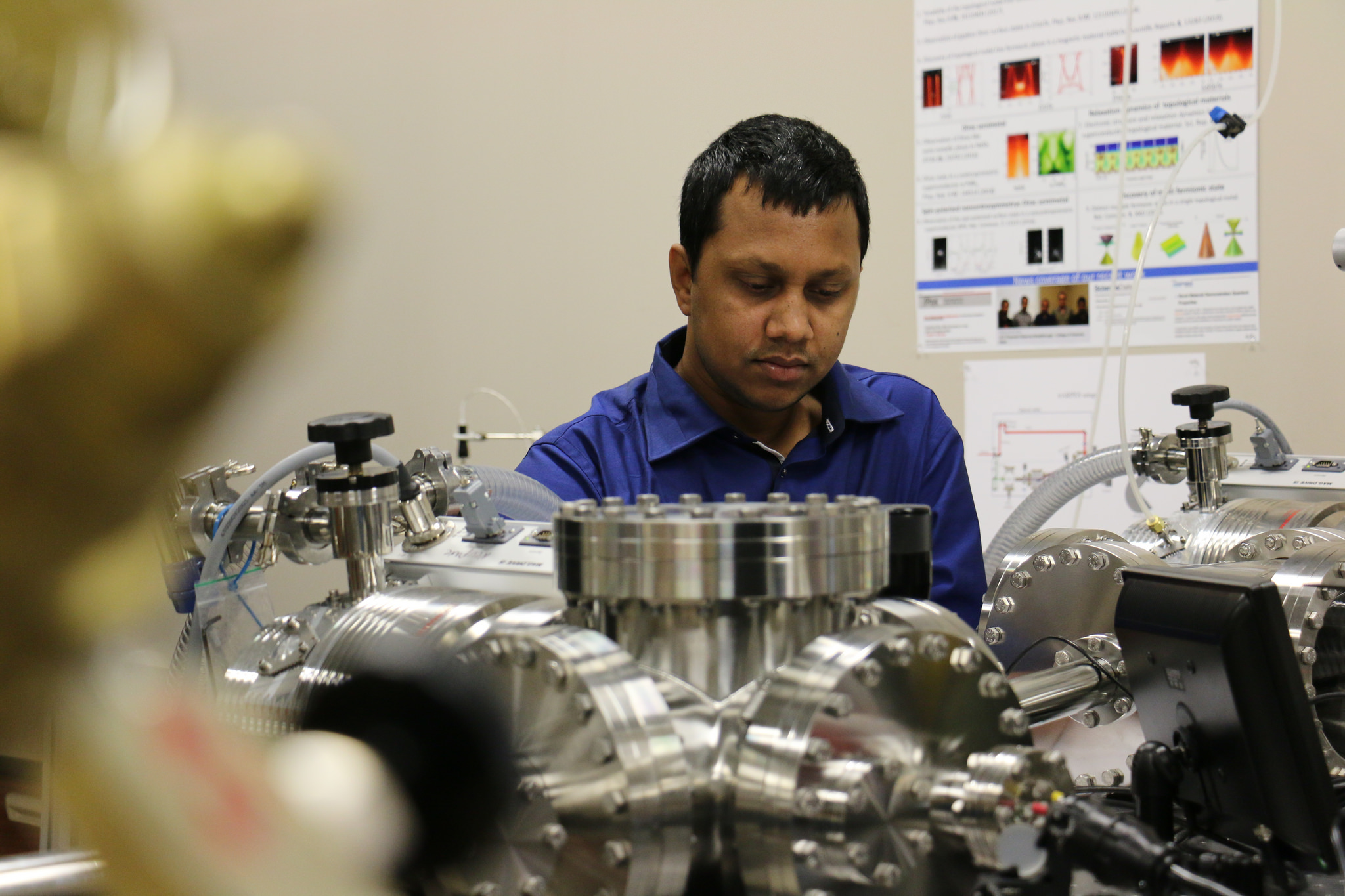
Single crystal and thin film growth
Using various techniques, we grow single crystal of the topological materials. Thin film of quantum materials are grown by Molecular Beam Epitaxy (MBE) technique, which has directly connected to the ultrafast pump probe setup.
We focus on research in the area of emergent quantum materials, in particular on their light matter interactions in order to explore the electron dynamics in these materials. We set up a state-of-the-art experimental technique called molecular beam epitaxy system which will be directly connected with the existing equipment for spectroscopic experimental technique. Molecular beam epitaxy (MBE), a sophisticated crystal growth technique to grow high quality crystalline thin films in the ultrahigh vacuum (UHV) conditions with precise control over thickness, composition and morphology, has been acknowledged as one of the best growth techniques
Information about the MBE equipment: LAB10 Molecular Beam Epitaxy (MBE) System from ScientaOmicron. The Lab10 is a small sample deposition tool for explorative material research under UHV conditions. It is designed to fulfill the requirements of modern thin-film deposition on sample sizes up to 10 x 10 mm. It is a flexible system platform suitable for large range MBE applications such as the deposition of metals, deposition of two-dimensional materials, and topological quantum materials. Lab10 MBE system has been connected to the the existing ultrafast spectroscopy chamber.
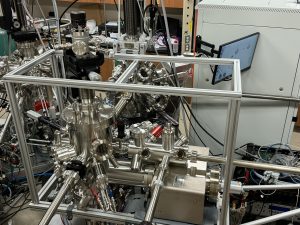
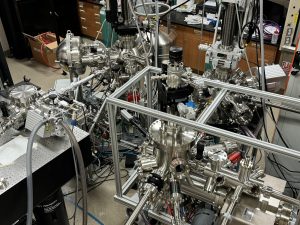
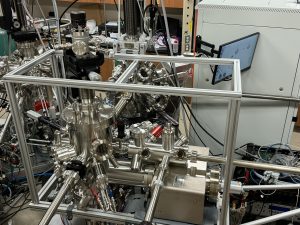
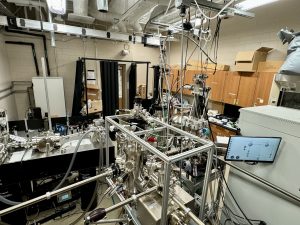
Beamlines
Our group performs measurements at various beam lines at ALS, SSRL, NSLS and SLS for advanced spectroscopic characterization of topological quantum materials.
